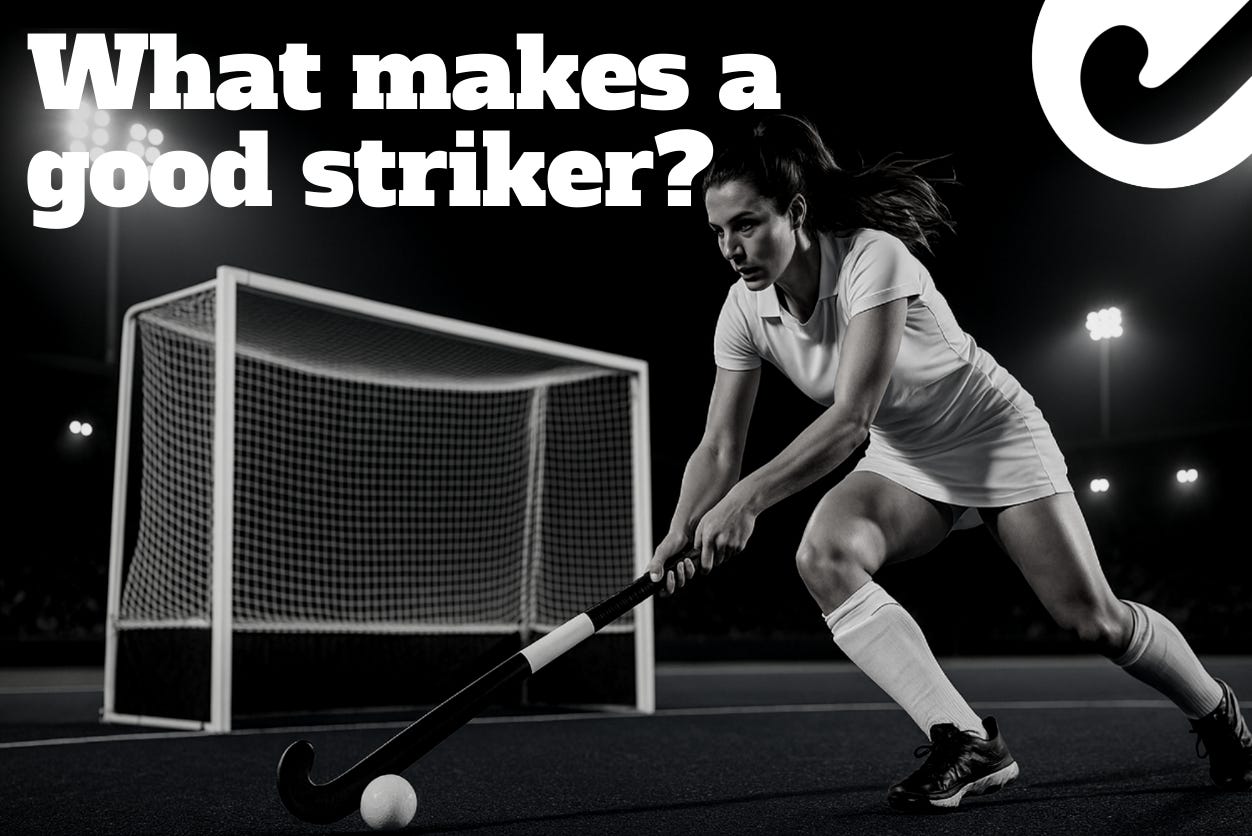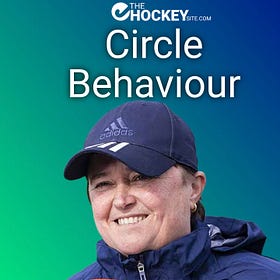What makes a good striker?
Let's break down the criteria, some questions to ask and fixes for common mistakes
A good striker in field hockey is defined by a combination of technical skills, tactical awareness, mental sharpness, and physical attributes. Below, I’ll break down a few possible key criteria that make a player a good striker, along with three questions a coach should ask to help players improve in each area, three common mistakes players make, and fixes for those mistakes.
1. Positioning and Awareness
Criteria: A good striker knows where to position themselves to maximize scoring opportunities and disrupt defensive structures.
Make them think:
"Are you consistently scanning the field to identify spaces and defenders' positions?"
"Do you know where the goalkeeper and defenders are before receiving the ball?"
"Are you adjusting your position based on the ball's location and your teammates' movements?"
Common Mistakes and Fixes:
Mistake 1: Standing static in the circle.
Fix: Teach strikers to constantly move, even small adjustments, to create passing lanes and confuse defenders.Mistake 2: Positioning too close to defenders.
Fix: Emphasize maintaining a stick-length distance from defenders to allow room for receiving and shooting.Mistake 3: Failing to anticipate rebounds.
Fix: Train players to stay alert and ready to react quickly to loose balls, using rebound-specific drills.
2. Finishing Skills
Criteria: The ability to convert opportunities into goals with precision and composure.
Make them think:
"Are you choosing the right technique (push, slap, hit) based on the situation?"
"Do you focus on accuracy over power when shooting?"
"Are you using your body to get the space you need?"
Common Mistakes and Fixes:
Mistake 1: Rushing the shot under pressure.
Fix: Simulate high-pressure scenarios in training to build composure and decision-making.Mistake 2: Over-reliance on power.
Fix: Focus on drills that prioritize accuracy, such as aiming for specific targets in the goal.Mistake 3: Poor body positioning when shooting.
Fix: Teach players to align their body correctly with the ball and goal, emphasizing balance and follow-through.
3. Decision-Making
Criteria: Knowing when to shoot, pass, or hold the ball based on the game context.
Make them think:
"Is a shot the right choice there and then? Is getting a penalty corner a better option? Or is someone else better positioned?"
"Do you recognize when to slow down or speed up your play?"
"Are you aware of the players around you and how it impacts your choices?"
Common Mistakes and Fixes:
Mistake 1: Forcing shots from poor angles.
Fix: Train players to recognize high-percentage scoring areas and pass or get a PC when necessary.Mistake 2: Holding the ball too long.
Fix: Encourage quick decision-making through small-sided games with time constraints.Mistake 3: Ignoring teammates in better positions.
Fix: Use video analysis to highlight missed opportunities and reinforce the importance of teamwork.
4. Movement Off the Ball
Criteria: Effective movement to create space for themselves and others.
Make them think:
"Are you making runs that pull defenders out of position?"
"Do you time your runs to arrive in the right place at the right moment?"
"Are you communicating with teammates to coordinate your movements?"
Common Mistakes and Fixes:
Mistake 1: Running too early or too late.
Fix: Practice timing runs in drills where players must arrive at specific spots as the ball is played.Mistake 2: Moving in straight lines.
Fix: Teach players to use diagonal and curved runs to lose their markers.Mistake 3: Moving out of the D.
Fix: Incorporate situational drills that require players to adapt their movement dynamically while staying in the D.
5. Mental Toughness
Criteria: The ability to stay focused, confident, and resilient under pressure.
Make them think:
"How do you handle missed chances or mistakes during a game?"
"Are you staying mentally engaged even when the ball is not near you?"
"Do you visualize success before taking a shot or making a play?"
Common Mistakes and Fixes:
Mistake 1: Losing confidence after missed opportunities.
Fix: Reinforce a growth mindset, emphasizing learning from mistakes and focusing on the next opportunity.Mistake 2: Becoming distracted or disengaged.
Fix: Use mental conditioning exercises to improve focus and concentration during games.Mistake 3: Overthinking in critical moments.
Fix: Train players to rely on instinct through repetitive, game-like drills that build muscle memory.
6. Physical Attributes
Criteria: Speed, agility, and endurance to outpace defenders and maintain performance throughout the game.
Make them think:
"Are you working on your acceleration and change of direction?"
"Do you have the stamina to maintain high-intensity efforts late in the game?"
"Are you physically strong enough to hold off defenders?"
Common Mistakes and Fixes:
Mistake 1: Poor conditioning leading to fatigue.
Fix: Implement a tailored fitness program focusing on interval training and sport-specific endurance.Mistake 2: Lack of explosiveness in short sprints.
Fix: Incorporate plyometric exercises and sprint drills into training.Mistake 3: Weakness in physical duels.
Fix: Focus on strength training, particularly core and lower body, to improve balance and power.
These criteria, questions, and corrections provide a structured approach to developing well-rounded strikers. If you’d like to dive deeper into specific drills or strategies, feel free to reach out or visit https://gotyourback.app to request a proposal for mentoring or coaching sessions.
Or you could start a chat with my AI coach at FieldHockey.Pro to see how we can solve your specific issues with strikers ↓
Feel free to talk in your own language as well 🇬🇧 🇳🇱 🇪🇸 🇩🇪 🇯🇵 🇫🇷 🇮🇳 🇵🇰…
Enjoy your hockey !
Some sources and/or good talks to consider (re)watching ↓
Circle behaviour
The topic chosen by Alyson Annan for her masterclass was circle behaviour. No surprise there, since she was a prolific striker herself in her playing days. We recorded it live on December 8 in 2023.
9 yard scoring
On November 10, 2021 we brought you Mike McCann to talk with us about 9 yards scoring. The box between penalty spot and goal – also referred to as the 9 yards area – is where most goals are scored from.
Beyond Shot Count: How Data Analysis Can Change Your Team’s Circle Tactics
Another masterclass is in the books! This time, we were fortunate to have analysis expert Simon Blanford join us again on The Hockey Site to tackle a topic close to all our hearts— scoring! Or to put it another way: are we coaching our players to make the best possible choices when they find themselves in the D?










This is great!